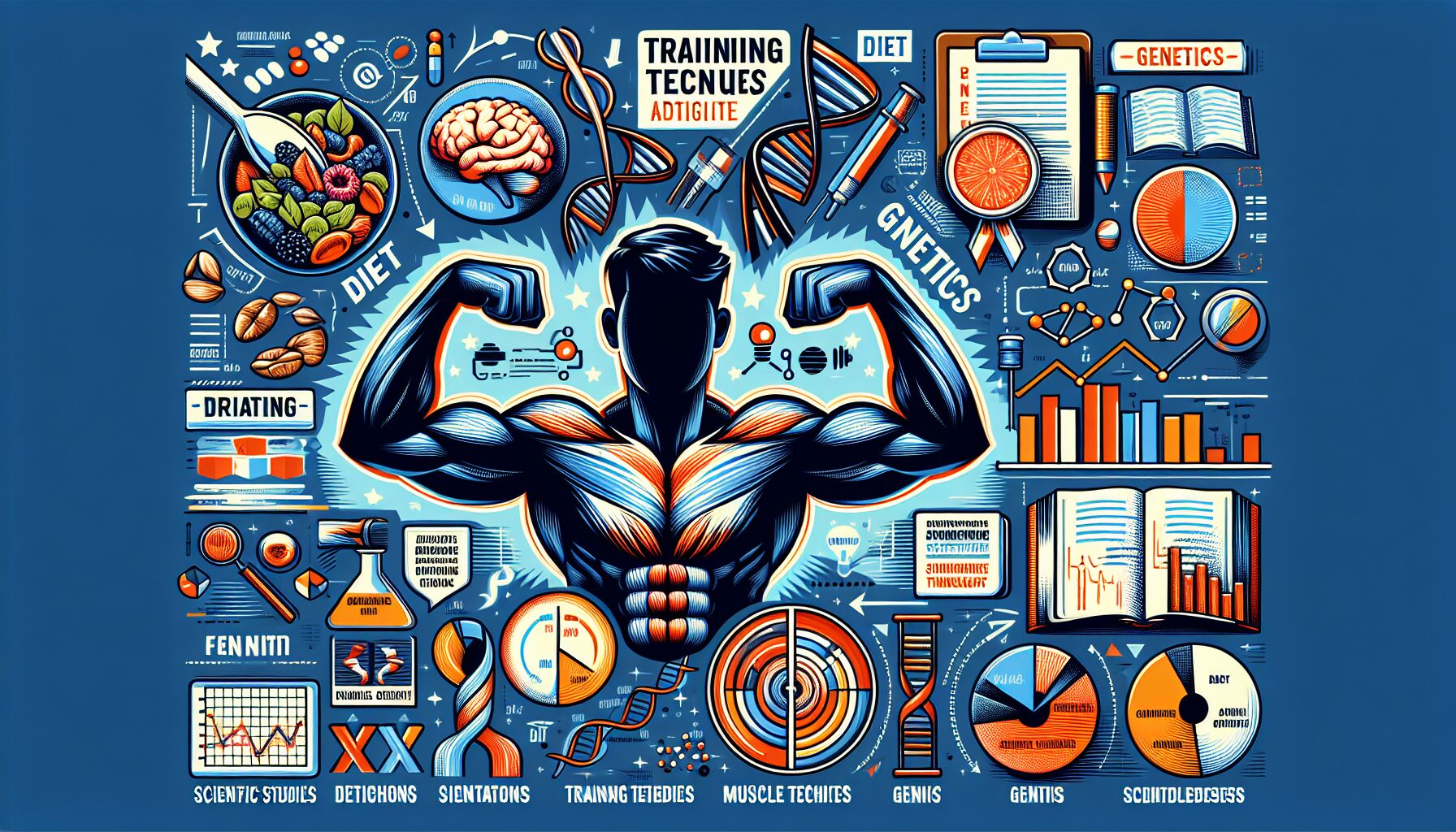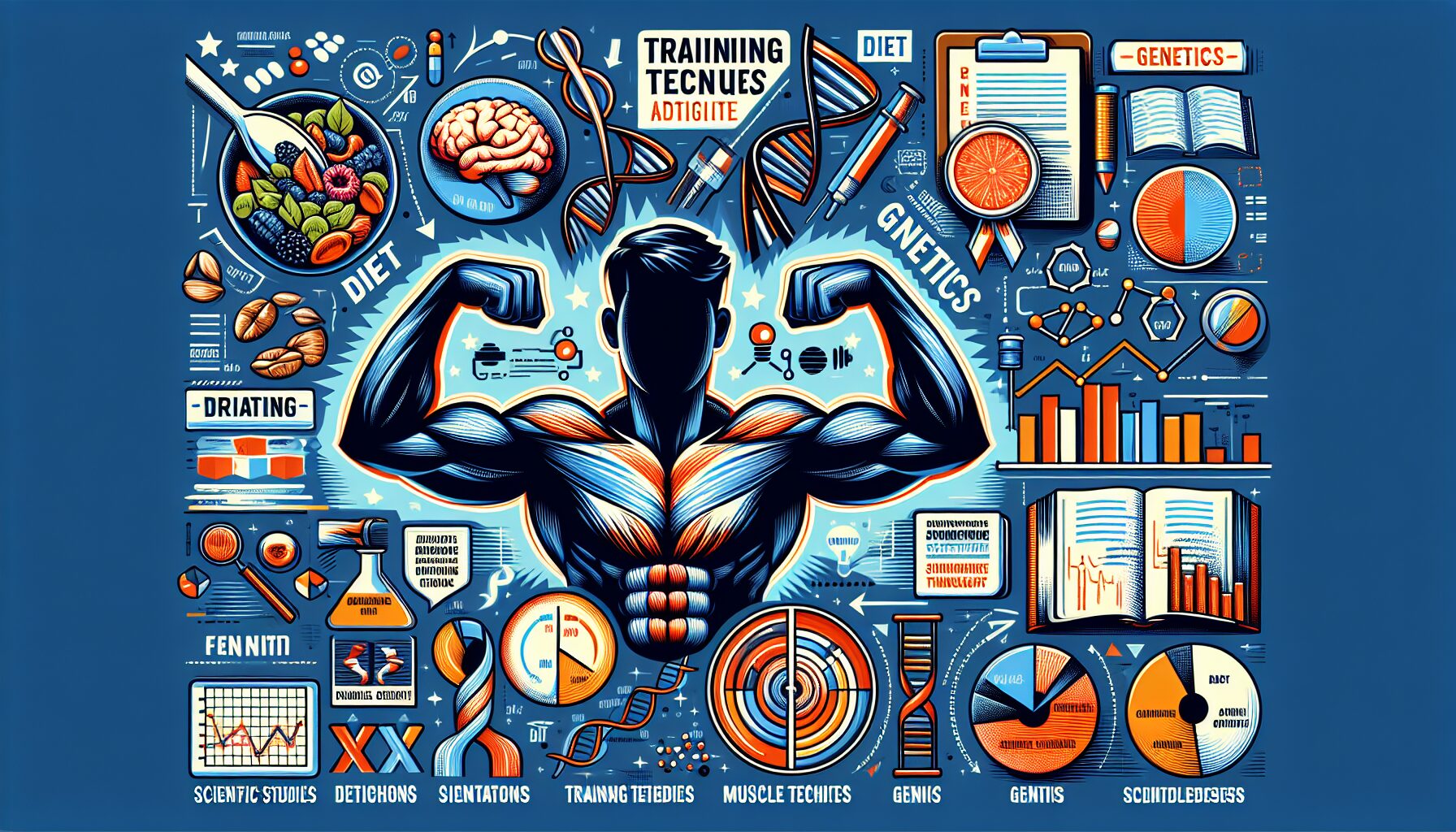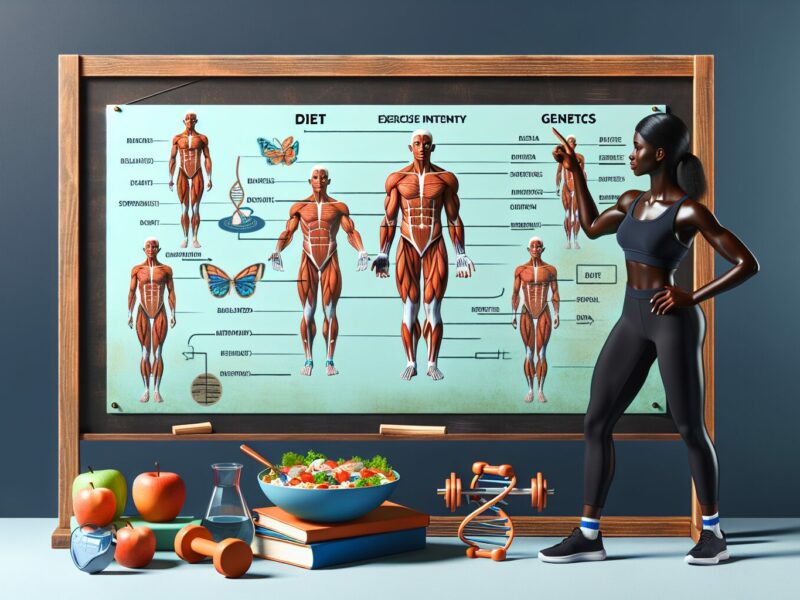Are you tired of spending hours at the gym with minimal results? Have you ever wondered if there’s a way to accelerate your muscle growth? Well, you’re in luck! In this article, we’ll explore the question of whether muscle growth can be sped up. We’ll discuss the factors that influence muscle growth, the importance of nutrition and proper rest, and some strategies you can implement to maximize your gains. So, if you’re eager to take your fitness journey to the next level, keep reading and discover the secrets to unlocking your muscle growth potential.
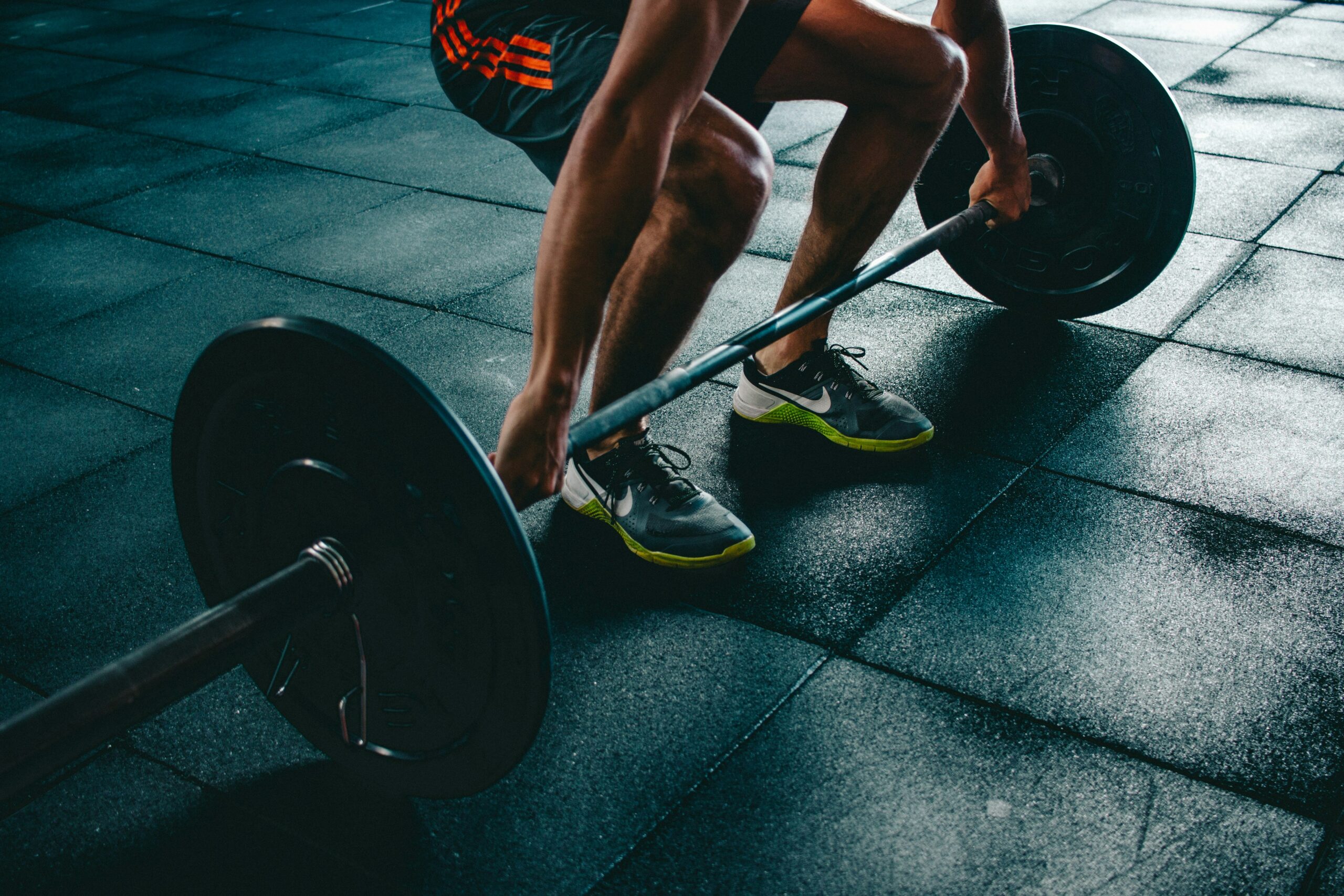
Factors that Affect Muscle Growth
Genetics
Genetics play a significant role in muscle growth. Some individuals are naturally predisposed to building muscle more easily, while others may have a harder time achieving the same results. Factors such as muscle fiber composition, muscle shape, and limb length all contribute to an individual’s genetic potential for muscle growth. While we can’t change our genetics, understanding them can help us tailor our training and nutrition strategies to maximize muscle growth.
Hormones
Hormones are chemical messengers in the body that regulate various processes, including muscle growth. Testosterone, growth hormone, insulin-like growth factor 1 (IGF-1), cortisol, and estrogen all have an impact on muscle growth and development. Testosterone, in particular, plays a crucial role in promoting muscle protein synthesis and muscle hypertrophy. Balancing hormones through healthy lifestyle choices and targeted training can optimize muscle growth potential.
Diet
Proper nutrition is vital for muscle growth. Consuming a well-balanced diet provides the necessary fuel and nutrients for muscle repair, recovery, and growth. To support muscle growth, a caloric surplus is often recommended, meaning consuming more calories than your body needs to maintain its current weight. Adequate protein intake is crucial, as it provides the building blocks (amino acids) for muscle repair and growth. Carbohydrates and fats also play important roles in providing energy for workouts and aiding overall muscle development.
Exercise
Regular exercise is a key factor in muscle growth. Resistance training, in particular, stimulates muscle fibers and triggers the body’s adaptive response, leading to muscle hypertrophy. Compound exercises, which involve multiple muscle groups, are highly effective for overall muscle growth. Examples of compound exercises include squats, deadlifts, bench presses, and pull-ups. Incorporating a variety of exercises that target different muscle groups ensures well-rounded muscle development.
Rest and Recovery
Rest and recovery are often overlooked but essential aspects of muscle growth. During intense workouts, muscle fibers undergo micro-tears, and it is during rest and recovery periods that these tears are repaired and muscles grow stronger. Obtaining sufficient sleep is crucial, as growth hormone release and muscle repair occur primarily during deep sleep. Additionally, rest days or active recovery sessions should be incorporated into a training program to allow muscles time to rest, repair, and adapt to the demands placed upon them.
Effective Training Strategies for Muscle Growth
Progressive Overload
Progressive overload is a training principle that involves gradually increasing the stress placed on the muscles over time. This can be achieved by lifting heavier weights, increasing the number of repetitions, or reducing rest periods between sets. By consistently challenging the muscles to work harder, muscle fibers are stimulated, leading to growth and strength gains.
Compound Exercises
As mentioned earlier, compound exercises are highly effective for muscle growth. They involve multiple joints and muscle groups, allowing for greater overall muscle activation. These exercises also promote functional strength, as they mimic everyday movements and enhance coordination. Incorporate exercises such as squats, lunges, deadlifts, bench presses, overhead presses, rows, and pull-ups into your training routine for optimal muscle growth.
Volume and Intensity
Volume refers to the total amount of work performed during a training session, including the number of sets and repetitions. Intensity, on the other hand, refers to the level of effort or load lifted. To promote muscle growth, a balance of volume and intensity is crucial. Higher volume workouts with moderate intensity help create metabolic stress, triggering muscle growth. Alternatively, lower volume workouts with higher intensity focus on neuromuscular adaptations and strength gains.
Frequency and Duration
The frequency and duration of your training sessions also play a role in muscle growth. Aim to train each muscle group at least twice a week to ensure sufficient stimulus for growth. However, be mindful of allowing for adequate recovery between sessions, as overtraining can hinder muscle growth. The duration of your workouts will depend on your individual fitness level and goals, but typically, 45-60 minutes of focused, intense training can yield optimal results.
Muscle Group Split
Muscle group split refers to dividing your training sessions to target specific muscle groups on different days. This approach allows for greater focus and intensity on each muscle group, ensuring adequate stimulation for growth. Common muscle group splits include upper body/ lower body splits, push/pull splits, or specific muscle group splits, such as chest and triceps, back and biceps. Experiment with different muscle group splits to find what works best for your body and goals.
Importance of Nutrition for Muscle Growth
Caloric Surplus
To support muscle growth, it is important to consume a caloric surplus, meaning consuming more calories than your body needs for maintenance. This surplus provides the energy and nutrients necessary for muscle repair, recovery, and growth. Aim to consume an additional 250-500 calories per day above your maintenance needs to support muscle growth. However, it is important to focus on quality calories from nutrient-dense foods rather than empty calories from processed foods.
Macronutrient Ratios
While consuming a caloric surplus is important, the quality of those calories matters too. Balancing macronutrients – carbohydrates, proteins, and fats – is crucial for optimal muscle growth. Carbohydrates provide energy for high-intensity workouts and replenish glycogen stores, while proteins are essential for muscle repair and growth. Fats also play a role in hormone production and overall health. Finding the right balance of macronutrients for your body and training needs is key.
Protein Intake
Protein is often called the “building block” of muscles, and for a good reason. It is crucial for muscle repair and growth. Aim to consume 1.2-2 grams of protein per kilogram of body weight per day, depending on your activity level and goals. Including lean sources of protein such as chicken, fish, tofu, eggs, and legumes in each meal can help meet your protein needs and support muscle growth.
Timing of Meals
When it comes to muscle growth, the timing of meals can also play a role. Consuming protein and carbohydrates within a couple of hours before and after workouts can help fuel exercise and aid in muscle repair. This is often referred to as the “anabolic window.” However, while timing can be important, overall daily nutrient intake and meeting your calorie and protein goals are more crucial for muscle growth than strict adherence to specific meal timing guidelines.
Supplements
While a well-balanced diet should provide most of the nutrients necessary for muscle growth, some individuals may benefit from supplementation. Protein powders, creatine, and branched-chain amino acids (BCAAs) are commonly used among athletes and fitness enthusiasts to support muscle growth and recovery. However, it is important to remember that supplements are not a substitute for a healthy diet and should be used in conjunction with proper nutrition and training practices.
Role of Hormones in Muscle Growth
Testosterone
Testosterone is a hormone that plays a significant role in muscle growth. It is responsible for promoting muscle protein synthesis, increasing muscle mass, and enhancing muscle strength. While testosterone is naturally produced in both men and women, men typically have higher levels, which can contribute to their ability to build muscle more easily. Strength training, proper nutrition, and adequate rest and recovery can help optimize testosterone levels for muscle growth.
Growth Hormone
Growth hormone (GH) is another hormone that influences muscle growth. It promotes muscle protein synthesis, helps regulate metabolism, and stimulates the release of insulin-like growth factor 1 (IGF-1), which plays a role in muscle development. Adequate sleep, high-intensity exercise, and balanced nutrition can help naturally stimulate growth hormone release for optimal muscle growth.
Insulin-like Growth Factor 1 (IGF-1)
IGF-1 is a hormone produced primarily in the liver in response to growth hormone stimulation. It promotes cell growth and division, including muscle cells. IGF-1 plays a crucial role in muscle repair and hypertrophy. Adequate protein intake, resistance training, and optimizing growth hormone levels can indirectly enhance IGF-1 production and support muscle growth.
Cortisol
Cortisol, often referred to as the “stress hormone,” can have both positive and negative effects on muscle growth. In moderate amounts, cortisol helps regulate metabolism and aids in the recovery process. However, chronically elevated cortisol levels, often associated with chronic stress, can promote muscle breakdown and hinder muscle growth. Strategies such as stress management techniques, adequate sleep, and balanced training can help keep cortisol levels in check for optimal muscle growth.
Estrogen
While estrogen is often associated with female reproductive health, it also plays a role in muscle growth. Estrogen has a protective effect on muscle mass and can help prevent muscle breakdown. It also influences collagen synthesis, joint health, and bone density, supporting overall musculoskeletal health. Balancing estrogen levels through proper nutrition, regular exercise, and a healthy lifestyle can contribute to optimal muscle growth.

Rest and Recovery for Optimal Muscle Growth
Sleep Quality
Quality sleep is crucial for optimal muscle growth. During sleep, the body releases growth hormone, which is essential for muscle repair and recovery. Aim for 7-9 hours of uninterrupted sleep each night to allow for sufficient deep sleep cycles. Creating a relaxing sleep environment, sticking to a regular sleep schedule, and implementing a bedtime routine can help improve sleep quality and maximize muscle growth potential.
Rest Days
Rest days are just as important as training days when it comes to muscle growth. They allow the body to recover from intense workouts and repair muscle fibers. Incorporate regular rest days into your training program, and avoid overtraining, which can lead to muscle fatigue, decreased performance, and increased risk of injury. Use rest days as an opportunity to engage in low-impact activities or active recovery, such as walking, yoga, or stretching.
Hydration
Proper hydration is often overlooked but critical for muscle growth and overall health. Water is essential for numerous bodily functions, including nutrient transportation, waste removal, and muscle function. Aim to drink at least 8 cups (64 ounces) of water per day, and adjust your intake based on activity level and climate. Hydrating before, during, and after workouts can help prevent dehydration and support optimal muscle growth.
Stress Management
Chronic stress can have a negative impact on muscle growth. Stress triggers the release of cortisol, which can promote muscle breakdown and hinder growth. Implement stress management techniques such as meditation, deep breathing exercises, and hobbies to reduce stress levels. Engaging in activities that you enjoy and spending time in nature can also positively impact mental and physical well-being, supporting muscle growth.
Active Recovery
Active recovery involves engaging in low-intensity activities to promote blood flow, enhance muscle recovery, and reduce muscle soreness. Light cardio exercises such as walking, cycling, or swimming can help flush out metabolic byproducts, reduce inflammation, and aid in muscle repair. Active recovery sessions should be incorporated into your training program to support optimal muscle growth and prevent overtraining.
The Myth of Spot Reduction
Body Fat Distribution
Body fat distribution is largely determined by genetics and hormones. It is important to note that spot reduction, the idea of targeting specific areas for fat loss, is a myth. When the body loses fat, it does so in a general pattern throughout the body, influenced by individual factors. Focusing on overall fat loss through a combination of proper nutrition, regular exercise, and a balanced lifestyle will ultimately lead to a more desirable body composition.
Spot Reduction Techniques
Despite the popularity of spot reduction techniques, such as targeted exercises or gadgets claiming to burn fat in specific areas, there is no scientific evidence to support their effectiveness. Performing endless sets of ab exercises, for example, will not solely burn belly fat. Instead, focus on full-body workouts that incorporate compound exercises, cardio, and proper nutrition to promote overall fat loss and reveal underlying muscle definition.
Targeted Exercises
While targeted exercises may not directly burn fat in specific areas, they can help shape and strengthen the underlying muscles. Exercises such as crunches, planks, and leg lifts can strengthen the core muscles, while bicep curls and tricep dips can tone the arms. Combining these exercises with overall fat loss strategies can help achieve a more sculpted appearance in specific areas.
Overall Fat Loss
To reduce body fat and reveal muscle definition, focus on overall fat loss through a combination of calorie control, regular exercise, and a well-rounded lifestyle. Consistently consuming a caloric deficit, engaging in both cardio and resistance training, and managing stress levels are key components of an effective fat loss strategy. Be patient and consistent, as sustainable fat loss takes time and commitment.

Injury Prevention for Continuous Muscle Growth
Proper Warm-up and Cool-down
Warming up before a workout is crucial for preparing the body for exercise and reducing the risk of injury. A warm-up should include dynamic movements that mimic the exercises you will be performing, gradually increase heart rate and blood flow, and activate the muscles. Cooling down after a workout with static stretching and gentle movements helps relax the muscles and prevent post-exercise soreness.
Stretching and Mobility
Incorporating stretching and mobility exercises into your training routine can improve flexibility, joint range of motion, and muscle function. Static stretching, dynamic stretching, and foam rolling can help release tension, prevent muscle imbalances, and reduce the risk of injuries. Pay attention to areas prone to tightness, such as the hips, shoulders, and lower back, and include specific stretches that target those areas.
Correct Lifting Form
Maintaining proper lifting form is crucial for injury prevention and optimal muscle growth. Poor lifting form can put unnecessary stress on joints and muscles and increase the risk of strains, sprains, or more severe injuries. Ensure you are using proper technique, maintaining neutral spine alignment, and engaging the appropriate muscle groups during exercises. If necessary, consider working with a qualified trainer or coach to learn correct form and technique.
Balanced Training
Balancing your training program is important for overall muscle growth and injury prevention. Incorporate a variety of exercises that target different muscle groups and movement patterns. Neglecting certain muscle groups or overtraining others can lead to muscle imbalances, which can increase the risk of injuries. Following a well-designed program that includes both strength and mobility training can help ensure balanced muscle development.
Incorporating Deloading Phases
Deloading phases, also known as recovery weeks, involve reducing training volume or intensity to allow the body to recover and adapt. These periods of active rest can help prevent overuse injuries, mental burnout, and plateauing in muscle growth. Deloading can be done by reducing weights, decreasing the number of sets or repetitions, or incorporating more low-intensity exercises. Listen to your body and schedule regular deloading phases into your training program for long-term muscle growth.
Overtraining: The Enemy of Muscle Growth
Signs and Symptoms
Overtraining occurs when the body is not given sufficient time to recover between workouts, leading to a state of chronic fatigue and decreased performance. Signs and symptoms of overtraining include persistent muscle soreness, decreased strength and endurance, increased fatigue, disturbed sleep patterns, decreased motivation, and increased risk of injury. Pay attention to your body and adjust your training program accordingly to prevent overtraining.
Recovery Strategies
Implementing proper recovery strategies can help prevent overtraining and support optimal muscle growth. Prioritize quality sleep, ensure adequate nutrition and hydration, and incorporate rest days and active recovery sessions into your training program. Consider periodizing your training to allow for planned recovery weeks, and be mindful of your overall stress levels. Recovery is just as important as training, and finding the right balance is key for continuous muscle growth.
Deloading Periods
As mentioned earlier, deloading periods are essential for preventing overtraining. By reducing training volume or intensity, the body has time to recover, adapt, and prevent burnout. Deloading can be done on a weekly basis, with one or two lighter workout days, or by scheduling recovery weeks every few months. Adjusting your training program to include planned deloading periods can help maintain long-term muscle growth without the risk of overtraining.
Training Variation
Variation in your training program is not only important for avoiding boredom but also for preventing overtraining and promoting muscle growth. Constantly challenging your muscles with new exercises, rep ranges, or training methods can help prevent plateaus and ensure continued progress. Incorporate different types of training, such as strength training, hypertrophy-focused training, and endurance training, to stimulate muscle growth from various angles and prevent overtraining.
Supplementation
While supplements are not essential for muscle growth, certain supplements may support recovery and prevent overtraining. Branched-chain amino acids (BCAAs) can help prevent muscle breakdown and reduce exercise-induced fatigue. Creatine, a popular supplement among athletes, can enhance muscle strength and promote muscle growth. However, it is important to note that supplements should not replace a well-balanced diet and proper training practices.
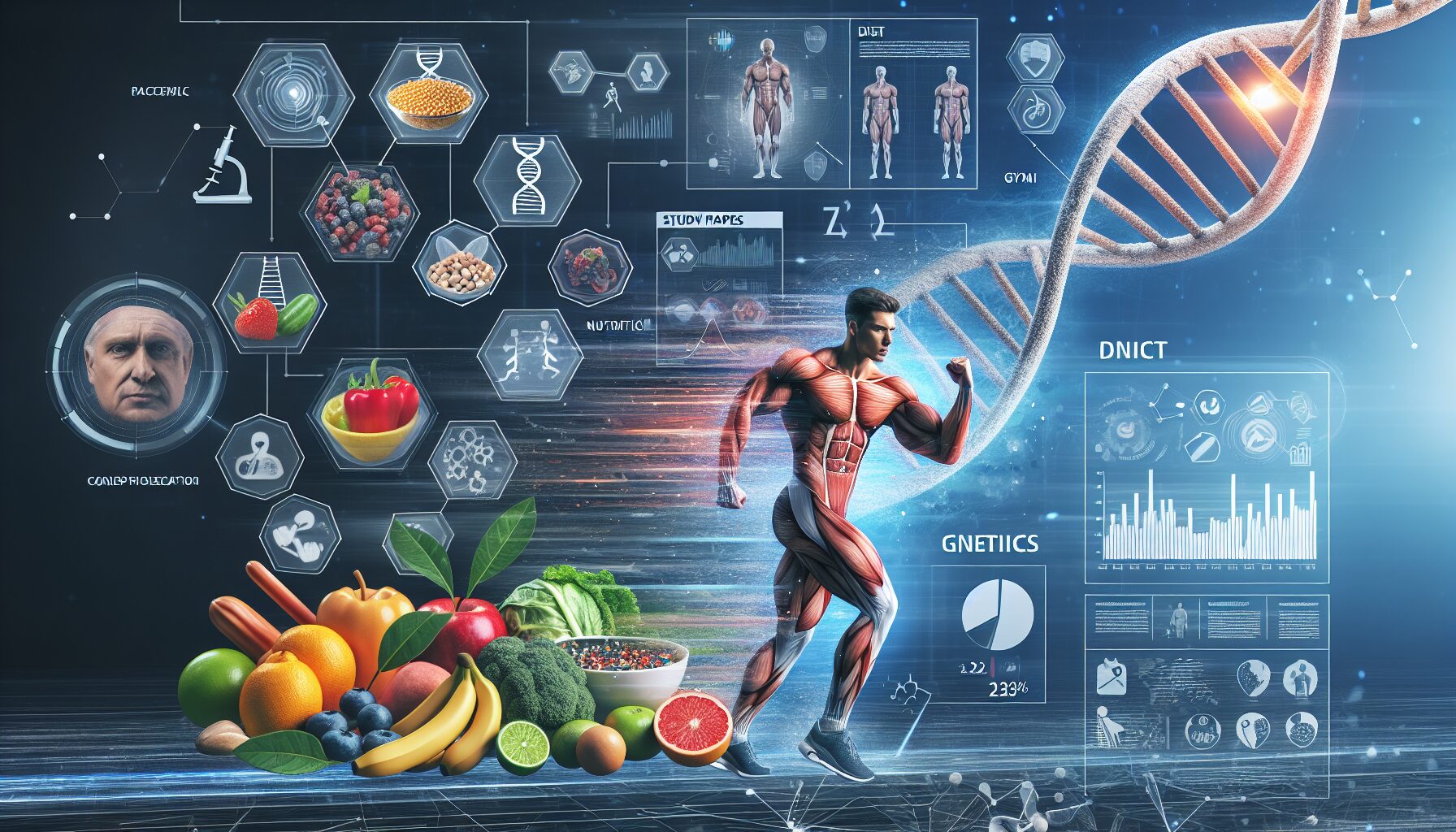
Optimizing Muscle Growth for Women
Hormonal Differences
Hormonal differences between men and women can influence muscle growth and response to training. Women naturally have lower levels of testosterone, which can make it more challenging to build muscle compared to men. However, women have the capacity to gain muscle and strength with proper training and nutrition. Understanding and adapting training strategies based on individual hormonal differences can optimize muscle growth for women.
Strength Training Programs
Strength training is essential for muscle growth in both men and women. However, women may need to adjust their training program to account for hormonal differences and potentially lower muscle-building potential. Focus on progressive overload, compound exercises, and adequate protein intake to stimulate muscle growth. Consider working with a qualified trainer who can design a customized strength training program tailored to your goals and needs.
Dietary Considerations
Diet plays a crucial role in muscle growth for women. As women tend to have lower calorie and protein needs compared to men, it is important to calculate your individual requirements. Aim for a caloric surplus and include sufficient protein in your diet to support muscle repair and growth. Additionally, consider factors such as menstrual cycle and hormonal fluctuations, which can impact appetite, energy levels, and nutrient needs.
Balancing Aesthetics and Functionality
When it comes to muscle growth, it is important to find a balance between aesthetics and functionality. While achieving a lean and sculpted physique may be a goal for some, it is equally important to focus on overall strength, mobility, and functional fitness. Incorporate exercises that reflect real-life movements and enhance overall physical performance. Embrace the journey of muscle growth and celebrate the many benefits it brings beyond aesthetics.
Supportive Community
Building muscle and embarking on a fitness journey can be more enjoyable and motivating with the support of a community. Surrounding yourself with like-minded individuals who share similar goals can provide inspiration, guidance, and accountability. Joining fitness classes, online forums, or finding a workout buddy can help create a supportive community that encourages continuous muscle growth and overall well-being.
Age and Muscle Growth
Effects of Aging on Muscle Mass
As we age, muscle mass naturally decreases due to a combination of factors, including hormonal changes, decreased physical activity, and decreased muscle protein synthesis. This condition is known as sarcopenia. However, regular exercise, specifically resistance training, can help combat age-related muscle loss and promote muscle growth and strength even in older adults.
Resistance Training for Older Adults
Resistance training is especially important for older adults, as it helps maintain and build muscle mass and strength. It can improve balance, reduce the risk of falls, and enhance overall functional ability. Older adults should focus on exercises that target major muscle groups, such as squats, lunges, chest presses, and rows. Begin with lighter weights and gradually increase the resistance as strength and confidence improve.
Nutritional Needs for Aging Muscle
Proper nutrition is essential for older adults to support muscle growth and recovery. Maintaining a balanced diet with an adequate calorie and protein intake becomes increasingly important with age. Include protein-rich foods such as lean meats, fish, poultry, dairy products, eggs, and legumes in each meal to support muscle repair and growth. Consider working with a registered dietitian to develop a personalized nutrition plan that meets your specific needs.
Recovery and Regeneration
As we age, the body may require more time for recovery and regeneration. Listen to your body and pay attention to any signs of overtraining or excessive fatigue. Adequate sleep, rest days, and active recovery sessions are essential for optimal muscle growth and injury prevention. Prioritize recovery strategies and make them an integral part of your training program to support muscle growth at any age.
Risk of Sarcopenia
Sarcopenia, or age-related muscle loss, is a significant concern for older adults. It can lead to decreased strength, decreased mobility, and increased risk of falls and fractures. Engaging in regular resistance training and following a well-balanced diet can help counteract the effects of sarcopenia. Be proactive in maintaining muscle mass and strength as you age to support overall health and quality of life.
